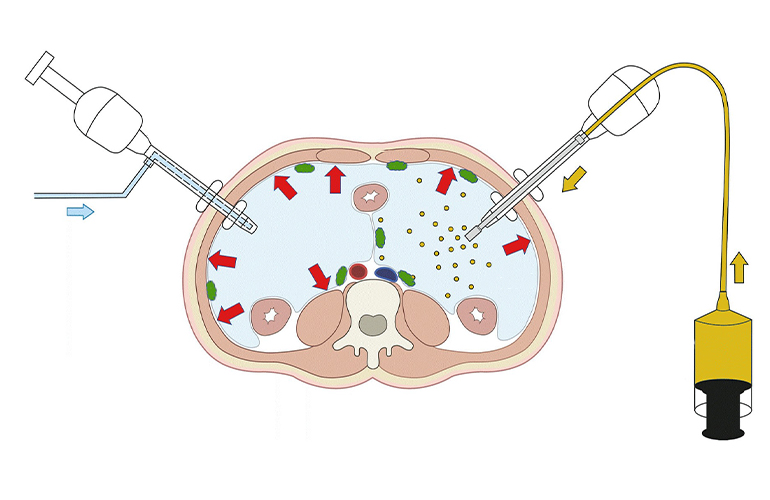
PIPAC
Oncological SurgeryIn intra-abdominal cancers where hot chemotherapy is applied, PIPAC, that is, "pressurized hot chemotherapy application", which puts an end to the problem of the drug not being able to reach the natural folds of the body, helps to control the tumor and prolong life in the ideal patient group.
Which Patients Is PIPAC Applied To?
The "peritoneal layer", which completely surrounds the abdominal wall and also covers the intra-abdominal organs, is an important structure that concerns the entire abdominal region. The most common types of cancer in the peritoneal area are; Pseudomixoma peritonei, which is the cancer of the peritoneum itself, is listed as stomach, appendix, large intestine, rectum, ovarian and pancreatic cancers.
These cancers spread to the peritoneum in various ways; Metastases may occur in the neighborhood, through spillage into the abdominal cavity, through blood or lymph. As a result, the tumor can spread like a handful of bulgur being sprinkled. With the progression of tumors that spread to the peritoneum, tumor deposits that cover all organ surfaces in the abdomen form and gradually grow. Meanwhile, fluid accumulation called ascites may also develop in the abdomen. The presence of acid indicates that the picture becomes more severe.
In this case, the benefit of intravenous chemotherapy treatment, defined as systemic chemotherapy, is greatly reduced. At this stage, if the patient cannot be given the option of HIPEC (hot chemotherapy into the abdomen) along with cytoreductive surgery (CRS), which means removing the tumorous peritoneum by peeling it off, PIPAC, that is, “pressurized aerosol chemotherapy”, helps to control the tumor and prolong life.
In the first stage of the treatment of these patients, the peritoneal membrane is completely peeled off. The surgeon destroys all accessible tumors surgically or by cauterization. After cleaning, cancer-killing chemotherapeutic drugs heated to 43 degrees are administered directly into the abdomen through drains. In other words, cytoreductive surgery + HIPEC is performed with open surgery. In cases where this initiative cannot be made, PIPAC steps in.
As the intra-abdominal pressure decreases due to the removal of ascites and tumoral masses in the abdomen, the functioning of the lungs and heart is relieved and the tumor burden becomes controllable as it decreases. The patient's survival time can also be extended. Life expectancy in one or two months can be increased 10 times. However, for this, the patient's general health condition, cell structure, tumor type and genetic structure are of great importance.
How Does the PIPAC Process Work?
In the PIPAC method, chemotherapy drugs are given into the abdomen in a similar way to standard chemotherapy, but this time the doses are 1/10 of those given intravenously. In this way, the cytotoxic effect of cancer-killing drugs on healthy cells is reduced and a high level of effectiveness is achieved.
In this treatment performed laparoscopically, the abdomen is entered through two incisions, one of 1 cm and the other of 0.5 cm. The drug to be given is selected according to the type of organ where the tumor originates. High-pressure chemotherapeutic drug administered through trocars entering the abdomen with a pen-like device (Kapnopen) is aerosolized and spreads everywhere.
With this change in the way the drug is administered, the patient's benefit increases. During the procedure, marks are placed in certain places as landmarks, so that the treatment can be repeated after 6 weeks if necessary.
This treatment can be done for up to 7-8 or even 10 sessions. On the third or fourth application of the treatment, it can be seen that almost all of the tumor has disappeared at the marked points.